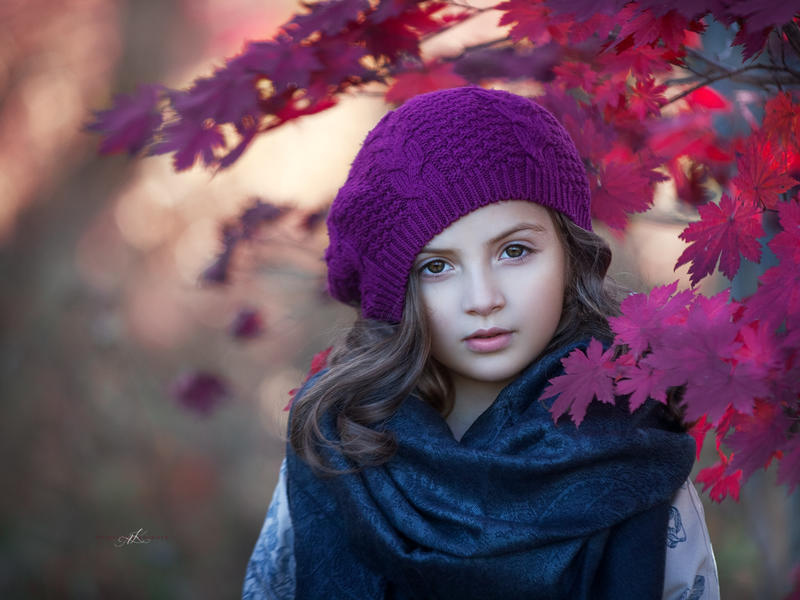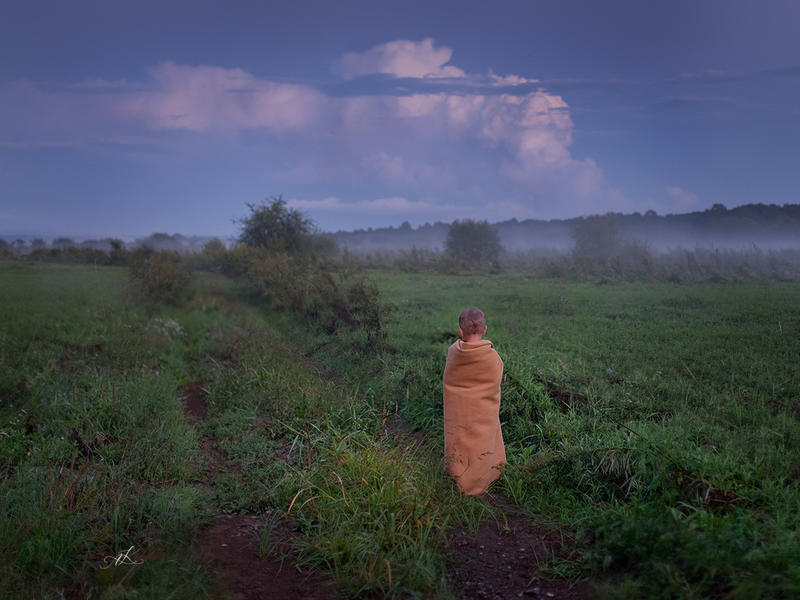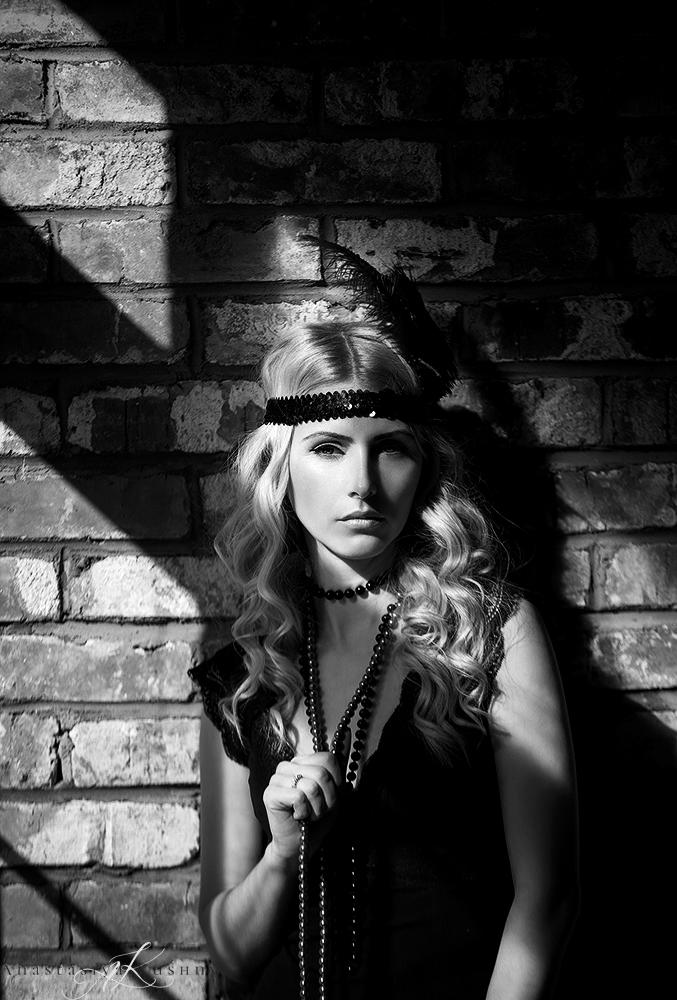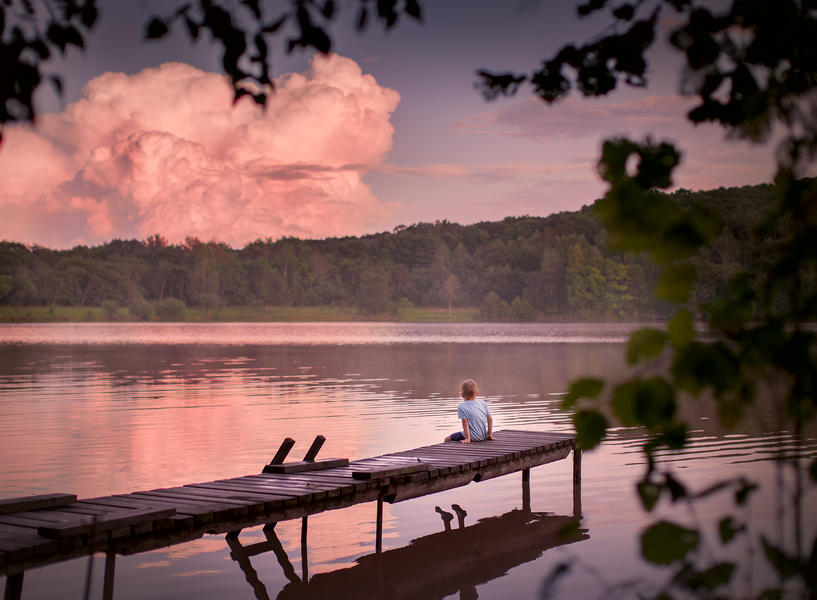If you’re looking to improve your natural light portrait photography in the coming year, then Anastasiya Kushnyr has some advice and techniques to set you on your way
'Tatiana', Canon EOS 5D Mark III, 80-200mm, 1/500sec at f/2.8, ISO 200
1. Friends and family members make great subjects for portrait photography
One of the things that can put off those new to portrait photography is building up enough confidence to approach either strangers or models to appear in their images. However, there is a quick and easy way around this. The fact is you’re surrounded my people who will be more than happy to stand in front of your lens – your own friends and family.
‘When you take a look at my images, you’re actually seeing a lot of people who are already familiar to me,’ says Anastasia. ‘They’re mostly made up of members of my family – such as my son and my parents – and a few of my friends. This is due to the fact that they are always nearby and it’s much easier and faster to negotiate an image when you’re working with someone you’re already comfortable with.
‘However, that’s not to say it’s always easier to work with familiar people. Everything depends on the person, their character and their mood at the time of shooting. How many times have you attempted to take a photo of a friend or family member only to find them shuffling around awkwardly or just not in the mood? You can’t push it. As the photographer, you need to be up for the process of negotiation and be understanding that not everyone wants to photographed all the time, even if they’re someone you know. The main thing is to catch their mood, be soft in your approach and always be flexible.’
'Sofiya', Canon EOS 5D Mark III, 80-200mm, 1/500sec at f/2.8, ISO 250
2. Shoot at sunset for dramatic and atmospheric portraits
For Anastasia – as you can probably see from her images – the most important lessons she’s picked up along the way have involved how natural light works in portrait photography. Light obviously plays the central role in creating any successful portrait photo in the way that it can affect image quality, through its volume, direction and atmosphere. There are other important components of a good picture (composition, colour, narrative, emotions, posture, etc.), but without understanding the light, without its proper use, you’ll not get a decent photo. Natural light is very flattering on the skin and natural environments will give your model a degree of freedom perhaps not available in closed-in or studio-set locations.
‘My favourite time of day for shooting is evening, usually just before and after sunset,’ says Anastasia. ‘This is the time of day when the light is at its most beautiful. It's also good to shoot at sunrise, but the issue there is that the sun rises very quickly and if the weather is especially clear, then the light quickly becomes a little too stiff.
‘Of course, you can shoot at any time of the day, even if it’s cloudy weather. This is not a huge problem as in these conditions light will be scattered giving your image a nicely diffused and soft light. In this case, it’s important to ensure you have plenty of open sky behind you (and facing the model) so that a good amount of light if highlighting your model.
‘However, if it’s a clear day you need be more careful about choosing the location. Light on a clear day can be very top-down, which will flatten your subject. In these conditions, it’s best to find a location that has a bit of shade and therefore some contrast between the light and dark areas.’
'Girl with Flowers', Canon EOS 5D Mark III, 80-200mm, 1/400sec at f/2.8, ISO 100
3. Shoot backlit images to tackle issues of hard light on your model
If your chosen location is lacking in shaded areas and you’re still faced with the issue of hard light on the model, then a way around this is to turn the model away from the sun. Then either put the sun directly behind them or behind them just out of the frame. You can then capture the beautiful golden glow that will catch on the outline of your model, particularly when the sun is low in the sky during sunset.
'Snow', Canon EOS 5D Mark III, 80-200mm, 1/250sec at f/3.5, ISO 400
4. Try and shoot with an 85mm or 135mm lens
Like a lot of portrait photographers, Anastasia ensures three key elements are present in each of her images: a blurred background, bokeh and a good degree of separation between the model and background environment. This is all easily achieved by making sure you have the right kinds of lenses to hand and opening up their apertures to the widest f-stop. Anastasia shoots with both a Canon EF 50mm f/1.2L USM lens and a Canon EF 80-200mm f/2.8L lens. That aperture of f/2.8 on the 80-200mm is important as it makes it possible for Anastasia to blur the background to an ideal level and beautifully frame her models with bokeh.
‘The correct choice of lens is very important,’ says Anastasia. ‘In my opinion, the focal length for portrait photos should be from 50mm to 200 mm. Anything less – say 35mm – and the proportions of your model’s face are going to become distorted. If you want to be specific about it, I find that the best focal lengths overall are 85mm and 135 mm on a full-frame camera. These focal lengths create a perfect degree of separation between your model and the background depending on how close you are to the model.’
'Foggy Field', 50mm, 1/100sec at f/1.6, ISO 400
5. Take control of your camera with manual mode.
‘I always shoot in manual mode,’ says Anastasia. ‘As I said, I always open up the aperture as much as I can: on the Canon 80-200mm lens that will be f/2.8; on the Canon 50mm I’ll open it up to around f/2.0 or 2.2. It’s only when shooting group portraits that I’ll switch to AV mode and take that up to f/3.5.
‘The shutter speed, of course, depends on the lighting and the subject, but when I’m shooting handheld, I’ll try and stick to the old rule of setting the shutter speed to match the focal length of the lens. For example, for a Canon 80-200 mm lens when shooting at a focal length of 200 mm, the shutter speed does not exceed 1/200sec. This is important as I’m often shooting handheld and with moving subjects. Using a fast shutter speed will ensure no camera shake and no blurriness of the subject.
‘ISO also depends on lighting, but I try to keep it at a minimum. Only in extreme cases will I increase its value, but never to more than ISO 1000. This is the operative value for my Canon EOS 5D Mark II camera. Any larger and the images are too noisy.’
'Chicago', Canon EOS 5D Mark III, 80-200mm, 1/1000sec at f/2.8, ISO 100
6. Be aware that reflections from coloured surfaces can ruin an otherwise good portrait
Reflections from coloured surfaces can tend to find their way into your images. This is particularly true in street locations where you may find that parts of your model, especially the face, have strange colour castes thrown on them from all sorts of surfaces that are in or near the frame. This tends to be more of an issue in bright conditions and can come from a variety of sources – painted walls, areas of bright primary colours, metal structures, your model’s clothes, etc.
‘Colour reflections can give a very ugly and dirty shade on the model’s face,’ says Anastasia. ‘It’s something that not many people tend to think of, but it happens. It’s just something to be aware of and to make you a little more in tune with your environment. How will the light and colour interact in ways you don’t always anticipate? Just make sure you avoid areas that are likely to throw castes upon your model’s face in bright conditions. And that includes their clothes.’
'Sofiya', Canon EOS 5D Mark III, 50mm, 1/160sec at f/2.2, ISO 640
7. No matter where you are or what you’re doing, always keep your eyes peeled for new locations
While you may choose to shoot your natural light portraits in urban environments, Anastasia is someone who tends to shoot in natural areas. It’s this decision that gives her photographs their magical quality. There’s something dreamlike about them.
‘I really like to shoot in natural locations such as in the forest, in the field or near the sea, says Anastasia. ‘Nature gives me an unlimited number of different places for shooting. They’re images that are rarely repeated due to the ephemeral nature of the locations. They’re always changing.
‘I'm always looking for locations to work in advance, usually during family walks. Wherever I am, I always look at the terrain from the point of view of the possibility of shooting there. I’ll tend to take pictures of the places I like and make notes for myself particularly about the location of the sun at this or that time of the day and how it illuminates particular areas of the site.
‘In addition, I’ll ask myself a series of questions: where do I plan to place the model in the location? What background will be behind them? How will light and shadow fall on the model’s face? These are all things I ask myself in advance. That means that when I go there again with my model, I’m totally prepared.’
'On the Lake', Canon EOS 5D Mark III, 50mm, 1/1000sec at f/2, ISO 100
8. Working with children can be endlessly rewarding but it takes skill and care
Working with adults and children requires different modes of approach and, as you can probably guess, a lot of patience. It’s an old cliché to say that you should never work with children but that’s all it is – a cliché.
‘One of the main differences between working with adults and children is that an adult can control their feelings,’ says Anastasia. ‘A child will behave the way they feel. If they’re in a bad mood, then they’re in a bad mood and they will not behave differently.
‘But it’s easy to attract them and keep interested. Photograph them while they’re playing, for example. While they are distracted you can photograph them in an unobtrusive way. Plus, if you have someone on the set they’re comfortable with – parents or siblings – that’s a big help.’
A further difficulty can arise when shooting staged portraits of children. It could be your image hinges on a child standing in a certain place and displaying certain emotions in their eyes and posture.
‘When I’m photographing staged portraits, I try and talk with children,’ says Anastasia. ‘I’ll ask them questions so they can think and reflect. It gives them a mental task that will cause them to display some emotion on their face. Then they’ll adopt certain types of natural body language that would be difficult to direct. I also show the image on the back of the camera so they can feel engaged in the process.’
Finally, Anastasia points out that it’s crucial not to force a child to smile. In this case, you’ll usually be left with a series of tense smiles that look totally unnatural. If you want to achieve positive emotions in a child it’s better to make them laugh by saying or doing something funny.
'Friends', Canon EOS 5D Mark III, 80-200mm, 1/1250sec at f/2.8, ISO 100
9. Look to the work of other photographers for inspiration
‘I am always enraptured by the photos of Elena Shumilova,’ says Anastasia. ‘I think she’s perhaps my favourite photographer. Her work is incredible. The light, the narrative, colours – everything about them works perfectly. When I look at her work it’s as if I’m experiencing the events with her subjects. And this year I was lucky enough to get to know her personally.'
Other favourites include:
• Lisa Holloway – her work with colour is very nice.
• Mecuro Cotto – I'm very inspired by his work. He works beautifully with light and lines in the frame.
• Sergey Spirin – very sincere and emotional cinematic photography










